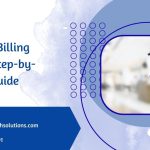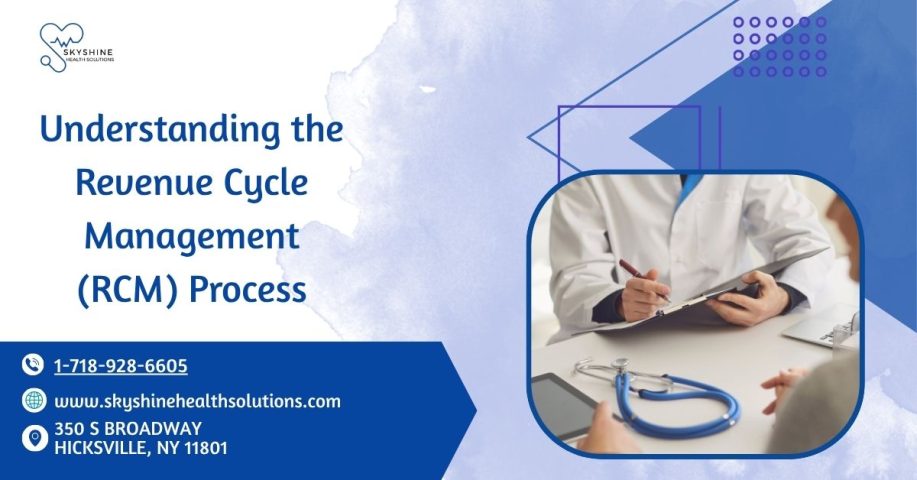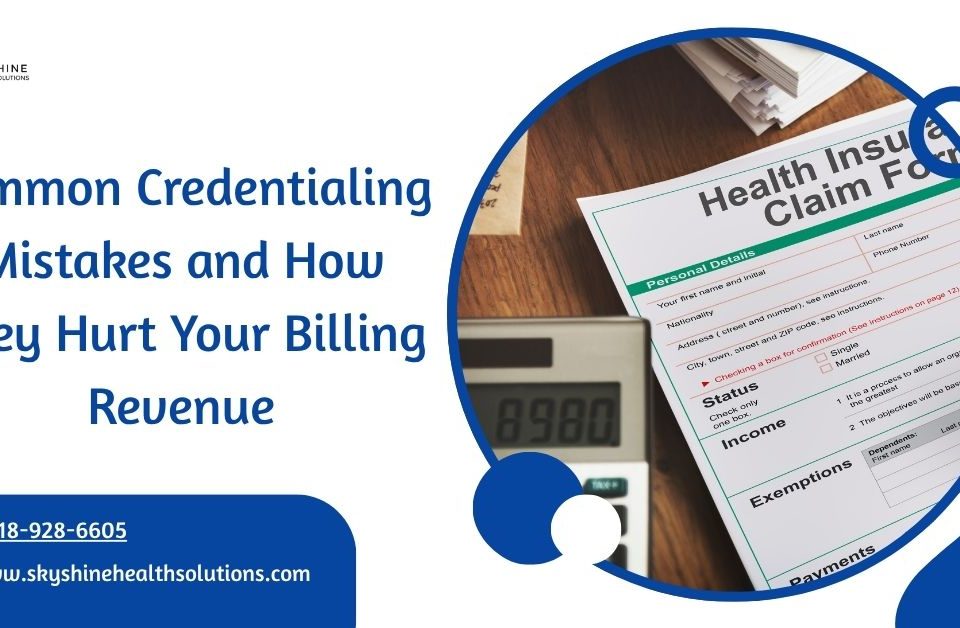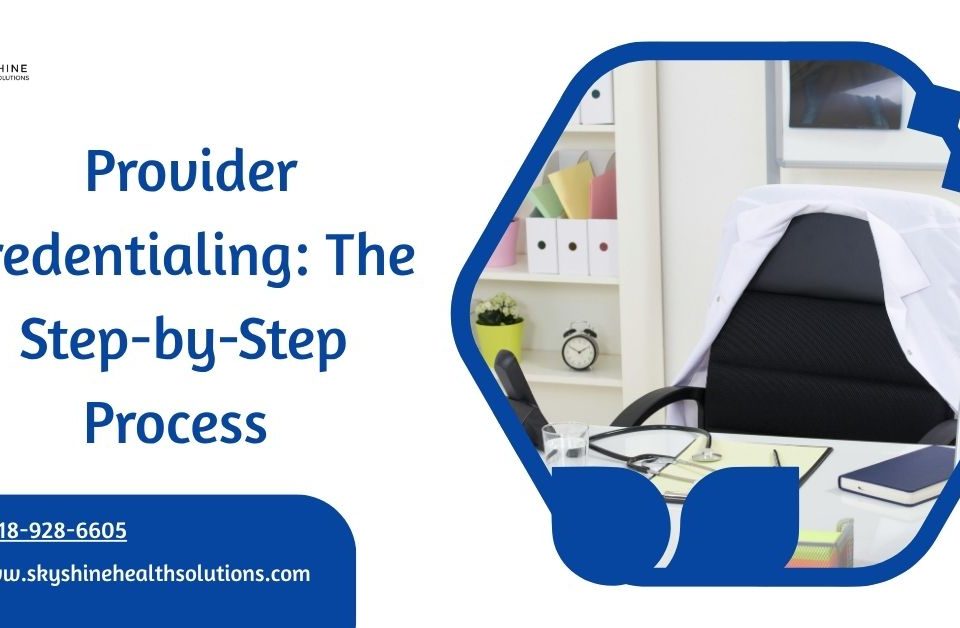
Medical Billing and Coding: What’s the Difference?
May 20, 2025
Medical Billing Process: Step-by-Step Guide
May 26, 2025The revenue cycle management process is the backbone of financial success for healthcare practices, ensuring payments for services are collected efficiently. In this guide, we’ll break down the Revenue Cycle Management (RCM) process for 2025, explaining each stage clearly to help providers optimize cash flow and compliance. Whether you’re a practice manager or billing professional, this guide will help you master RCM effectively.
What Is the Revenue Cycle Management Process?
To begin, the revenue cycle management process encompasses all administrative and clinical functions that contribute to capturing, managing, and collecting revenue for healthcare services. In essence, it starts when a patient schedules an appointment and ends when the provider receives full payment. Moreover, RCM ensures compliance with regulations like those for Medicare and Medicaid in 2025. Let’s explore the key stages of this process.
Stage 1: Pre-Visit Processes
First, RCM begins before the patient visit. This includes:
-
-
- Patient Scheduling: Collecting basic patient information during appointment booking.
- Insurance Verification: Confirming coverage and eligibility to avoid claim denials.
- Pre-Authorization: Obtaining payer approval for specific services, if required.
For example, verifying insurance upfront prevents issues like non-covered services. Therefore, accurate pre-visit data collection is critical.
-
Stage 2: Patient Encounter and Documentation
During the visit, providers document services thoroughly. This involves:
-
-
- Recording diagnoses, treatments, and procedures in the patient’s medical record.
- Ensuring documentation supports medical necessity for reimbursement.
Since incomplete or unclear documentation can lead to denials, use electronic health records (EHRs) to standardize entries. As a result, claims are more likely to be approved.
-
Stage 3: Medical Coding
Next, translate clinical documentation into standardized codes. Specifically:
-
-
- Use ICD-10 codes for diagnoses.
- Apply CPT codes for procedures.
- Include HCPCS codes for supplies or non-physician services.
For instance, incorrect coding, like using an outdated ICD-10 code, can trigger rejections. Thus, train coders on 2025 coding updates to ensure accuracy.
-
Stage 4: Charge Capture and Claim Submission
After coding, capture charges and submit claims to payers. This includes:
-
-
- Entering charges into the billing system based on coded services.
- Reviewing claims for errors before submission.
- Submitting claims electronically via a clearinghouse for efficiency.
Because payers like Medicare have strict deadlines (e.g., 12 months), timely submission is essential. Additionally, “clean” claims reduce denial risks.
-
Stage 5: Payment Processing and Posting
Once claims are processed, payments and explanations of benefits (EOBs) arrive. In this stage:
-
-
- Post payments to patient accounts in the billing system.
- Review EOBs for discrepancies, such as underpayments.
- Identify denials or rejections for follow-up.
For example, a denial due to missing prior authorization requires quick action. Consequently, accurate payment posting ensures financial clarity.
-
Stage 6: Denial Management
If claims are denied, address them promptly. Follow these steps:
-
-
- Analyze denial reasons using EOBs or Electronic Remittance Advice (ERA).
- Correct errors (e.g., coding mistakes) and resubmit for rejections.
- Prepare appeals with supporting documentation for denials.
Since appeal deadlines are often tight (30–45 days), use denial tracking tools. Moreover, identifying denial patterns helps improve future claims.
-
Stage 7: Patient Collections
After insurance payments, bill patients for remaining balances (e.g., copays, deductibles). This involves:
-
-
- Sending clear, itemized statements.
- Offering flexible payment plans when needed.
- Communicating transparently about charges.
For instance, explaining balances in simple terms encourages timely payments. As a result, patient collections improve cash flow.
-
Stage 8: Reporting and Analysis
Finally, analyze RCM performance through reporting. This includes:
-
-
- Tracking key metrics like claim acceptance rates and days in accounts receivable.
- Identifying trends in denials or delays for process improvements.
- Ensuring compliance with 2025 billing regulations.
By regularly reviewing reports, practices can optimize revenue. Thus, consistent analysis drives long-term financial success.
-
Best Practices to Optimize the RCM Process
To enhance efficiency, adopt these strategies:
-
-
- Leverage Technology: Use RCM software to automate coding, claims, and reporting.
- Train Staff: Ensure teams stay updated on 2025 regulations and coding standards.
- Conduct Audits: Regular internal audits catch errors before submission.
- Engage Patients: Provide clear billing communication to boost collections.
By implementing these practices, you’ll streamline the revenue cycle management process.
-
Final Thoughts
Ultimately, the revenue cycle management process is complex but vital for healthcare financial health. By mastering each stage—from pre-visit processes to reporting—you can reduce denials, improve cash flow, and ensure compliance in 2025

Learn about Outsourced vs. In-House Billing: Pros & Cons for Small Practices
Have questions? visit Medical Billing FAQs















